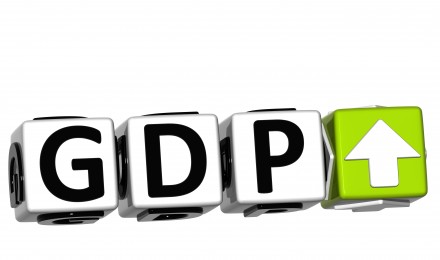The Labor Department reports that initial jobless claims climbed to 352,000 last week amidst moderate growth in the labor market, a 4,000 increase over the previous week total of 348,0000—after originally reporting 346,000. According to most economists, a weekly claims report in the area of 350,000 or lower signifies moderate growth in the labor market, which tabulates into roughly 150,000 net hires a month.
The indicator falls slightly above the 352,000 applications median anticipated by 46 economists responding to the Bloomberg weekly survey with predictions ranging from 330,000 to 380,000.
Recent job data has been somewhat volatile during the Easter holidays and spring break season.
Data Volatile Over Recent Weeks
For the week ending March 30, initial jobless claims rose to 388,000—up from 357,000 the week before. This spike, which was followed up by a lower than expected Employment Situation report, which revealed that firm only added 88,000 jobs in March after adding 268,000 in February.
This caused some concern that an economic slowdown—of an already sluggish economy—would transpire in response to government spending cuts. However, the number of new claim applications plunged to 348,000 for the week ending April 6 and has vacillated in the 350,000 range for the last couple of weeks.
The unemployment rate for March dropped from 7.7% in February to 7.6%, which is the lowest level in 48 months.
Other Report Information
The numbers show that the four-week moving average for initial claims increased 2,750 to 361,000. Economists consider this indicator a more accurate reflection of labor market trends because it smoothes out volatile readings,
The total number of individuals receiving jobless benefits declined by 35,000 to 3.07 million persons for the week ending April 6. This measurement does not include individuals receiving extended benefits under federal unemployment insurance programs.
Persons who have exhausted their standard benefits and now collect emergency or extended benefits dropped by 55,000 to 1.78 million for the week ending March 30. The unemployment rate for people eligible to receive unemployment benefits remained unchanged at 2.45% for the week ending April 6, based on the report.
Nine states and territories reported a decrease for initial claims and 44 jurisdictions stated that claims increased. These figures have a lag of one week.
Effects of Tax Hike and Sequestration
The jobless claim data does not reflect the effects of sequestration thus far. Sequestration refers to the $85 billion in automatic government budget cuts that went into effect on March 1. Nonetheless, many economists expect the results of higher taxes and deep budget cuts to start showing up in future employment, manufacturing and retail data.
With a relatively stable labor market—when demand is strong enough to keep employers from laying off workers—it provides the backdrop necessary for companies to create more jobs as sales increase. Consumer spending plays a significant role in the economy because it makes up 70% of Gross Domestic Product.
Consumers will need to continue spending gains to keep the economy afloat after cutbacks in government expenditures, which accounts for about 20% of domestic spending.
The Labor Department reports that initial jobless claims climbed to 352,000 last week amidst moderate growth in the labor market, a 4,000 increase over the previous week total of 348,0000—after originally reporting 346,000. According to most economists, a weekly claims report in the area of 350,000 or lower signifies moderate growth in the labor market, which tabulates into roughly 150,000 net hires a month.
The indicator falls slightly above the 352,000 applications median anticipated by 46 economists responding to the Bloomberg weekly survey with predictions ranging from 330,000 to 380,000.
Recent job data has been somewhat volatile during the Easter holidays and spring break season.
Data Volatile Over Recent Weeks
For the week ending March 30, initial jobless claims rose to 388,000—up from 357,000 the week before. This spike, which was followed up by a lower than expected Employment Situation report, which revealed that firm only added 88,000 jobs in March after adding 268,000 in February.
This caused some concern that an economic slowdown—of an already sluggish economy—would transpire in response to government spending cuts. However, the number of new claim applications plunged to 348,000 for the week ending April 6 and has vacillated in the 350,000 range for the last couple of weeks.
The unemployment rate for March dropped from 7.7% in February to 7.6%, which is the lowest level in 48 months.
Other Report Information
The numbers show that the four-week moving average for initial claims increased 2,750 to 361,000. Economists consider this indicator a more accurate reflection of labor market trends because it smoothes out volatile readings,
The total number of individuals receiving jobless benefits declined by 35,000 to 3.07 million persons for the week ending April 6. This measurement does not include individuals receiving extended benefits under federal unemployment insurance programs.
Persons who have exhausted their standard benefits and now collect emergency or extended benefits dropped by 55,000 to 1.78 million for the week ending March 30. The unemployment rate for people eligible to receive unemployment benefits remained unchanged at 2.45% for the week ending April 6, based on the report.
Nine states and territories reported a decrease for initial claims and 44 jurisdictions stated that claims increased. These figures have a lag of one week.
Effects of Tax Hike and Sequestration
The jobless claim data does not reflect the effects of sequestration thus far. Sequestration refers to the $85 billion in automatic government budget cuts that went into effect on March 1. Nonetheless, many economists expect the results of higher taxes and deep budget cuts to start showing up in future employment, manufacturing and retail data.
With a relatively stable labor market—when demand is strong enough to keep employers from laying off workers—it provides the backdrop necessary for companies to create more jobs as sales increase. Consumer spending plays a significant role in the economy because it makes up 70% of Gross Domestic Product.
Consumers will need to continue spending gains to keep the economy afloat after cutbacks in government expenditures, which accounts for about 20% of domestic spending.







